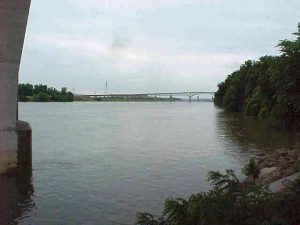Flood clean-up precautions for central Illinois area along Illinois River
May 10, 2019 Public health and safety are the number one concerns after heavy rains and flooding. Flood water can carry bacteria and other contaminants that could cause disease and illness.
Public health and safety are the number one concerns after heavy rains and flooding. Flood water can carry bacteria and other contaminants that could cause disease and illness.
During this time of heavy rains and flooding in the Central Illinois, the Peoria City County Health Department, Tazewell County Health Department and Woodford County Health Department urge all residents to take safety precautions against diseases:
These basic precautions can help to prevent disease:
- Minimize skin contact with flood water, especially cuts and sores. Keep them clean and covered. The water may be contaminated with oil, gasoline or raw sewage.
- Do not allow children to play in flood water as it may be contaminated by sewage overflows.
- Do not eat or drink anything exposed to flood water. Throw away food, even canned goods, that has come in contact with flood waters.
- Do not use water from flooded water wells. An alternate source of potable water should be obtained such as bottled water. Once flood waters recede, the well should be tested to make sure the water is safe to drink. Contact your local health department to obtain a test kit.
- Keep contaminated objects, water and hands away from your mouth, eyes and nose.
- Wash hands frequently, especially after bathroom use, before eating and immediately following contact with flood water or contaminated objects or surfaces.
- Service damaged septic tanks and leaching systems as soon as possible. Damages sewer systems pose a health hazard.
Take the following precautions to prevent injury:
- Turn off main power switches if necessary. Air out and wipe dry all appliances and electrical outlets exposed to water before use.
- Have an electrician check your house’s electrical system before turning the power on again.
- If you have fuel oil or gas systems, be sure tanks are secure and all lines are free from breaks.
- Wear rubber boots, gloves and an N95 or HEPA respirator mask during removal and cleanup.
- Open windows if possible to ventilate and dry the area. Fans and dehumidifiers can be used to help with drying.
The following cleaning guidelines may help prevent the transmission of disease and reduce property loss.
General Cleaning:
- Discard any contaminated objects that cannot be thoroughly washed or laundered.
- Wash contaminated surfaces and objects with warm, soapy water and disinfect with a bleach and water solution made of no more than 1 cup of bleach per 1 gallon of water. For objects that would be damaged by bleach, use a home or laundry disinfectant.
- Make sure to read and follow label instructions. Do not use ammonia. Do not mix ammonia and bleach; the vapors are hazardous.
- Scrub and wash all objects in the affected area of your home, including clothes, exposed to flood waters. Use warm, not hot, tap water with soap.
Do not drive through flooded roadways. Find alternate routes of travel…Turn Around, Don’t Drown.
RELATED: Heavy rains draw pests inside homes
For additional information to protect yourself and your family, visit the Illinois Department of Public Health website at http://www.idph.state.il.us/floodinfo/index.htm.
For more information on public health issues, visit your local county health department website:
Peoria City/County Health Department, www.pcchd.org
Tazewell County Health department, www.tazewellhealth.org
Woodford County Health Department, www.woodfordhealth.org







